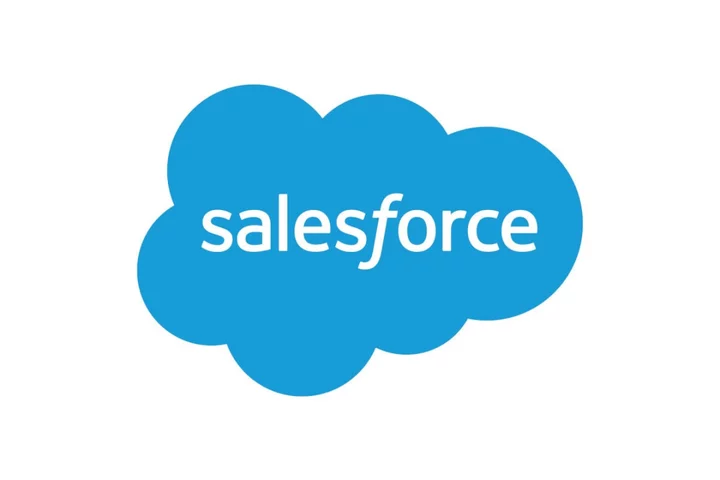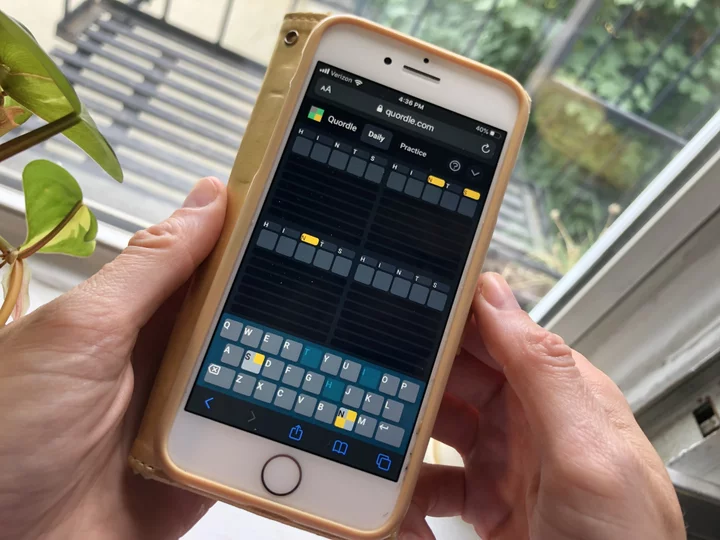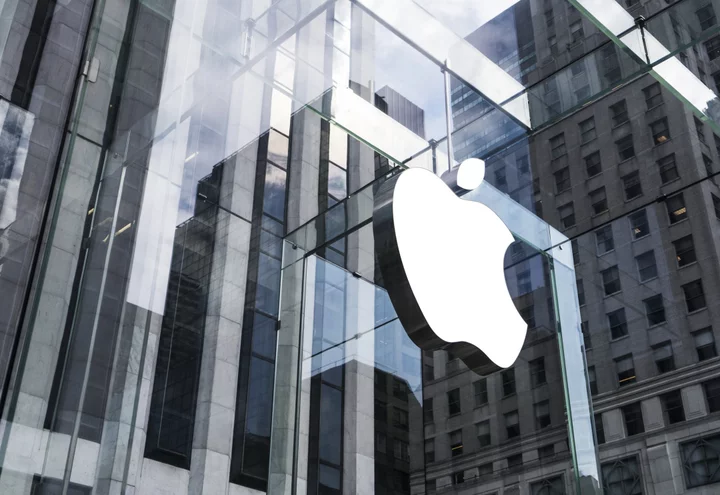Salesforce is regarded as one of the best customer relationship management (CRM) solutions for large-scale enterprises, with its Salesforce Sales Cloud Lightning Professional tool earning our Editors' Choice award. However, that enterprise-grade CRM is too complex and costly for smaller businesses. On the other end, the company's entry-level Salesforce Essentials offered limited features at a steeper price than its competitors in the small- to medium-size business (SMB) space. That brings us to Salesforce Starter, a streamlined version of the award-winning platform designed to replace Essentials on Salesforce's menu of CRM options. Starter is specifically targeted toward SMBs, giving Salesforce a seat at the table with HubSpot CRM, Freshsales, and Zoho CRM (our Editors' Choice pick that features deep third-party integrations).
(Credit: PCMag/Salesforce)How Much Does Salesforce Starter Cost?
Like its predecessor, Salesforce Essentials, Salesforce Starter costs $25 per user per month, billed annually. That's on the higher end of the affordability scale. Still, Starter does a better job than its predecessor of merging usability and scalability with a comprehensive set of sales, marketing, and service tools that won't overwhelm new CRM users.
The most notable bone that Salesforce has thrown to its SMB customers is that you can onboard up to 325 users on Starter, compared with Essentials' 10-user limit. Salesforce aims to make Starter flexible enough to grow with small to medium businesses, so you won't need to jump to a pricier, more complex solution before you're ready.
As with many of its competitors, you can test drive Salesforce Starter for 30 days without a credit card before diving into a yearlong commitment.
If you need more advanced features, Salesforce Professional is the next tier at $80 per user per month, billed annually. This plan adds tools like sales forecasting, quotes and contracts, and third-party API access. Then there are Salesforce's Enterprise tiers that range in cost from $165 to $500 per user per month, billed annually. These include the sophisticated features, high-level customization, and robust library of add-ons that make Salesforce one of the top CRMs.
How does Salesforce Starter fare against its rivals? Let's take Zoho CRM, for example. Zoho's Standard plan costs $14 per user per month, billed annually, making it notably more affordable than Salesforce Starter. Although it lacks the case management and artificial intelligence-optimized tools found in Salesforce Starter, Zoho compensates by offering lead scoring and sales forecasting. Both platforms are evenly matched when it comes to customization, reporting, and ease of use. Ultimately, your choice boils down to your budget and business needs.
(Credit: PCMag/Salesforce)How to Set Up Salesforce Starter
Salesforce Starter's setup process is one of its most impressive features. In contrast to earlier Salesforce products, Starter practically holds your hand (in a good way) through onboarding. There's still a noticeable learning curve, but you won't need to outsource onboarding to a Salesforce expert. This will save your business money.
To begin, you fill out a brief form and take a short survey regarding your business goals, which will then bring you to a two-minute video. (The video is merely a Salesforce commercial, so you won't lose much by skipping it.). When you're ready to purchase a plan, click the "Buy Now" button in the application's top-right corner to begin the three-step checkout process.
Then you'll see a homepage split into two main areas. The top section, Quick Look, features shortcuts to essential sales, marketing, and service tools. Click on these for a guided walkthrough of those elements, complete with on-page prompts and a sidebar checklist you can either move, minimize, or snooze as needed. The homepage's bottom half highlights your recent sales activities and suggests the next steps based on those metrics.
The top tabs highlight the Accounts, Contacts, Sales, Service, Marketing, Calendar, Dashboard, and Reports sections. Above these tabs are a universal search bar and a notifications button. Guidance Center and Quick Settings offer setup checklists and admin tools, such as adding users or managing your Salesforce subscription.
These are all welcome features, and they make it clear that Salesforce Starter aims to provide SMBs with a turnkey CRM. Starter doesn't support what Salesforce calls "custom objects," which let third-party vendors integrate their software with the platform. That's in contrast to Saleforce's earlier Essentials product, but the benefit here is a less time-intensive setup. This is ideal for companies new to CRMs or smaller teams that lack the resources to allocate for a lengthy onboarding process.
(Credit: PCMag/Salesforce)Data Transfer and Syncing Options With Salesforce Starter
There are two ways to sign in to Salesforce Starter: the usual email-and-password method or syncing to your Google or Microsoft account. The latter method streamlines the login process and lets you directly upload contacts, emails, and calendar events to the CRM. Salesforce's Einstein Activity Capture automatically links synced data to appropriate deals, granting you more time to focus on revenue-generating tasks. ("Einstein" is Salesforce's catch-all branding for any feature it claims is powered by AI.)
To import sales data, leads, or opportunities, you must upload a CSV file. You can opt to populate your contacts that way, as well.
Salesforce Starter's Pillars of Sales Success
The Guidance Center focuses on three main pillars for selling on the platform: Accounts, Contacts, and Opportunities. These serve as the backbone of your Starter sales operations, housing all the essential information and functions you'll need to initiate and advance deals.
An unobtrusive pop-up walks you through manually entering data for each section. After saving the data, you're taken to an overview page divided into three parts: personal details, recent activities, and other related CRM data such as Cases and Files. This hub streamlines vital sales activities like sending emails, scheduling meetings, and logging calls, eliminating the need to toggle tabs or swap screens.
You can filter Accounts, Contacts, and Opportunities with preset or custom list views. Tailor these lists for targeted marketing campaigns or generate quick sidebar charts to track specific metrics on the fly. You also can switch between table, Kanban, and split view formats, whichever suits your workflow best.
(Credit: PCMag/Salesforce)Maximizing Lead Generation in Salesforce Starter
Although Salesforce Starter's target audience is SMBs, many of which will have little or no experience with CRM software, it offers many features that aid growing companies in executing an efficient lead generation strategy without devoting too much time to grunt work (read: data entry). These tools are found in the Marketing hub. They don't rival what's available from standalone email marketing and marketing automation products, but they'll be a boon to smaller companies that don't want to navigate learning multiple applications for their sales functions.
Cadences, a feature also present in Salesforce Sales Cloud Lightning Professional, guides you through the prospecting process by mapping out activity sequences. These sync up with Tasks, which automatically update as leads progress through the pipeline.
Sorting leads and automating tasks is seamless, thanks to Segments and Flows. These sections have a visual interface with drag-and-drop elements and dropdown menus, leveling the playing field for people new to CRMs who don't want to be inundated with lines of unfamiliar, confusing code.
The Campaigns tab has an email builder with customizable templates and myriad components for businesses wanting to level up their outreach. Whether you're sending one email or preparing an email blast, the Einstein Send Time Optimization suggests the best times to hit send (you can disable this if you prefer manual timing).
The Performance tab offers a comprehensive view of your ongoing email campaigns so you'll know what's working and what's not. Notably, this component was often the slowest to load during our tests. (For context, we tested the software against the latest version of Chrome on a 2019 Intel-based MacBook Air.)
Salesforce Starter lets you send up to 2,000 emails per month, which should suffice for most small businesses. However, if you need to up that allowance, you can pay an extra $10 per month for another 1,000 sends.
Advanced options, such as lead scoring and sales forecasting, aren't part of the package, which is expected given Salesforce Starter's focus on user-friendliness for smaller businesses. Nor is there any integration with social media networks, which is something to keep in mind if you promote heavily on such platforms. However, Zoho CRM is worth investigating if you're looking for such features at a fair price.
(Credit: PCMag/Salesforce)Keeping Clients Happy With Salesforce Starter
In addition to its Sales and Marketing tools, Salesforce Starter also has a Service hub to help manage customer queries. The central feature here is Cases, where you log and view every interaction that a customer had with your company about a given issue. This way, any team member can easily step in and pick up where someone else left off for a smoother transition. (Once again, you can think of this as a subset of what you'd get from a standalone help desk product.)
There's also the Knowledge tab, where you write and publish articles about common customer problems and their solutions, all within the CRM. These articles are searchable and accessible right within each customer case, so you can resolve things quickly and keep things moving.
The last Service feature is Quick Text, designed to speed up outreach by letting you create preset email messages for occasions like birthdays or special promotions. We couldn't fully test this due to a minor bug. Still, it's worth noting that at the time of our test, Salesforce Starter was a just-launched product. As of this writing, it's still only available in a limited number of geographic regions, mainly owing to language localization issues.
(Credit: PCMag/Salesforce)Measuring Success With Dashboards and Reporting
Salesforce Starter has the weakest reporting capabilities among the full family of Salesforce Sales products. However, compared with most CRM competitors in the small business space (like Freshsales or HubSpot CRM), it's robust without the overkill of advanced features better suited for large enterprises.
Salesforce Starter comes with over 60 customizable report types across 11 categories, such as sales, marketing, service, and admin. You'll also have a range of nearly a dozen chart types, giving you the flexibility to present your data in the most meaningful way. You can organize dashboards according to report types and tailor the formatting to your liking.
You can make reports and dashboards public, private, or limited to specific users. With the Subscribe feature, you can opt to receive notifications for report or dashboard updates in real-time or at scheduled intervals.
(Credit: PCMag/Salesforce)Is Salesforce Starter Easy to Use?
Salesforce Starter aims to be accessible for newcomers to the Salesforce ecosystem or CRMs in general. While the platform is feature-rich, which could potentially steepen the learning curve, the on-page guidance and easy access to the Guidance Center are a boon for smaller teams that may not have the means to bring in a Salesforce expert to train them. There's also the Trailblazer Community, where you can find resources and answers to any questions you may have.
Salesforce is known for its high level of customization, and Salesforce Starter also delivers on that front. You can tweak the interface to your liking, which could range from something as basic as choosing between a wide-spaced or compact layout, or going all-in and incorporating the colors and logo of your company for a personal touch.
On the other hand, unlike its predecessor, Salesforce Essentials, Salesforce Starter doesn't support the platform's custom objects. As mentioned above, this restricts the range of third-party app integrations that are available. But once again, this is likely intentional given the platform's focus on simplicity for small businesses. If building a tech stack is necessary for your small business, look at HubSpot CRM instead.
Salesforce Starter syncs with the Salesforce mobile app, which is free to download on Android and iOS. While it lacks access to the advanced remote features available in Salesforce's Enterprise tiers, the core functionality should meet the needs of most small to medium businesses.
A User-Friendly Gateway to the Salesforce Platform
Salesforce bills Salesforce Starter as a platform for small- to medium-size businesses seeking a turnkey CRM. It succeeds in that regard, thanks to a straightforward setup process and a focus on core sales, marketing, and service tools. Its scalability and ease of use make it a suitable choice for companies that want to streamline their operations, minus the burden that often accompanies the introduction of new technology. For most SMBs, Salesforce Starter is a fine introduction to the Salesforce ecosystem (or CRMs in general).
There are concessions you must make if you opt for Salesforce Starter. Notably, a lack of support for third-party objects and fewer AI-powered tools than other Salesforce products. The trade-off is a CRM that's essentially ready to use out of the box, barring any tweaks you'll want to make to the interface. Editors' Choice winner Zoho CRM is a better value for your money, but the entry-level Starter is an excellent gateway into the broader Salesforce platform that offers room to grow.









